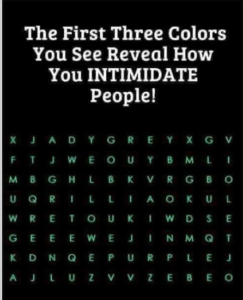The First Three Colors: A Journey Through Primary Hues
From the moment humans began observing and interpreting the world around them, color has played a powerful role in our perception, communication, and expression. Among the vast spectrum of hues we see today, the first three colors—red, blue, and yellow—hold a foundational place in both science and art. These are known as the primary colors, and they serve as the building blocks for countless others.
1. Red – The Color of Passion and Power
Red is arguably the most emotionally intense of all colors. Historically, red was one of the earliest pigments used in prehistoric cave paintings, derived from natural ochre and minerals. Across cultures, it’s been associated with life, vitality, danger, and love.
In ancient Egypt, red symbolized life and celebration but also anger and chaos. In China, it represents luck and happiness, while in the West, red has become synonymous with romance, courage, and energy. Red grabs attention—think of stop signs, warning labels, and fire trucks. It raises blood pressure and stimulates appetite, which is why it’s popular in branding and advertising.
2. Blue – The Color of Calm and Wisdom
Blue has a more tranquil and introspective energy. Ironically, it was one of the last colors to be named in ancient languages. Some historians believe early societies didn’t even perceive blue as a distinct color, as it’s rarely found in nature compared to red or yellow.
It wasn’t until civilizations learned to extract blue dye from lapis lazuli or plants like indigo that blue gained prominence. In the Renaissance, blue became associated with divinity and royalty—especially in religious paintings where the Virgin Mary was often depicted in blue robes.
Today, blue is linked to trust, intelligence, and serenity. It’s the color of the sky and sea, evoking openness and depth. It’s also the most popular favorite color around the world.
3. Yellow – The Color of Light and Joy
Yellow, bright and radiant like the sun, symbolizes warmth, optimism, and clarity. It was one of the earliest colors used in ancient Egyptian art, where it often represented gold and eternity.
In color psychology, yellow stimulates mental activity and generates muscle energy. It catches the eye more than any other color, which is why it’s used for warning signs and school buses. However, too much yellow can also cause anxiety or irritation, especially in intense shades.
Artists have long embraced yellow for its emotional impact. Van Gogh’s famous sunflower series is a glowing tribute to its expressive potential.
Why These Three?
Red, blue, and yellow are called primary colors because they cannot be made by mixing other colors. But when combined in various ways, they form the secondary colors—green (blue + yellow), orange (red + yellow), and purple (red + blue)—and eventually the entire color wheel.
These three hues are more than just the beginning of color theory; they’re symbolic of emotion, history, and culture. They appear in flags, fashion, fine art, and even children’s toys—like the classic set of crayons we all grew up with.
Understanding the first three colors isn’t just about art—it’s about seeing the world through a more meaningful and vibrant lens.
